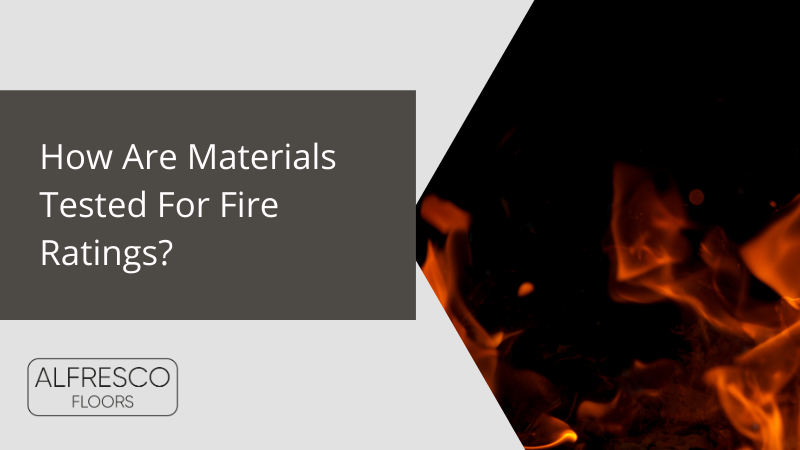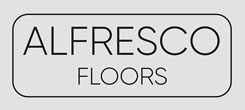
10 May How Are Materials Tested For Fire Ratings?

You will have no doubt heard about construction products being described as ‘A1/non-combustible’, ‘A2/limited combustibility’ and so on. But how is this assessed?
This blog sets out to give you a high-level overview of how materials in the UK (and other European Countries) are tested for fire ratings, allowing the architect to confidently specify appropriate materials for any project they are involved in.
This is of particular importance to those involved in the design or specification of a high-rise building above 18 metres in height. In recent years, changes in Building Regulations prohibit the use of combustible materials in external walls on “relevant buildings” and “specified attachments” above this height.
UK Fire Classification
‘Non-combustible, ‘limited combustibility’ and ‘combustible’ are three labels that relate to a product’s reaction to fire classification in the UK. Using the BS 476 suite of tests, this can be achieved through the National classes. However, most construction products require a CE Mark – which means that products must also be classified through the Euroclass System.
The Euroclass System: How Does It Work?
To harmonise standards across the EU, officials introduced the Euroclass System. The system categorises products – ranging from A1 (non-combustible) down to F (highly-combustible). This is determined using a defined test or combination or tests.
The Euroclass System also provides additional classification for smoke production and flaming droplets/particles. This is of particular importance when differentiating between A1 and A2 classification, as both are defined by having ‘no contribution to fire’. However, materials that are given an A2 classification do produce smoke and/or flaming droplets/particles.
Some products are intrinsically A1-rated with no need for testing
It is important to note that some products are naturally A1 rated – meaning that there is no need for fire testing. Products like this include aluminium, porcelain, concrete and natural stone – providing that they have not been ‘treated’ in any way – for example, use of glue, coatings etc. For example, our A-PED™ product range is composed 100% of aluminium and steel, and therefore does not require a fire safety test.

What Tests Are Used Within the Euroclass System?
When assessing construction products (other than flooring), the Euroclass system uses four tests:
- EN ISO 1182:2010 – Non-combustibility test
- EN ISO 1716:2018 – Determination of the gross heat of combustion (calorific value)
- EN 13823:2010+A1:2014 – Single burning item (SBI) test
- EN ISO 11925-2 – Single-flame source test/ignitability test
For flooring, the same test methods are used – except for the SBI test. Instead, a ‘radiant panel test EN ISO 9239-1’ is carried out.
1. EN ISO 1182:2010 – Non-combustibility test
This thirty-minute test is designed to assess whether a product will contribute to a fire.
How is it carried out?
A small specimen is placed within a cylindrical furnace which is maintained at 750°C and changes in temperature on the surface of the specimen are closely monitored via thermocouples.
The specimen is also observed for signs of sustained flaming.
At the end of the text, the specimen is then tested for mass loss via a calculation.
2. EN ISO 1716:2018 – Determination of the gross heat of combustion (calorific value)
This calculates maximum heat release when the specimen is burned completely. The small test specimen is ground to a powder and ignited in a pressurised oxygen atmosphere within a calorimetric bomb – that is located within water.
Changes in water temperature are monitored closely during the burning. This is then calculated based on specimen mass and other correction factors.
The test criteria used within the Euroclass system is:
PCS — gross calorific potential.
3. EN 13823:2010+A1:2014 – Single burning item (SBI) test (Not for Flooring)
This test involves mounting a specimen on a trolley rig – forming a room corner. It is exposed to flames with a heat release of 30 kW for a period of 20 minutes.
During this time, heat and smoke production is measured within the ducting for the exhaust hood, and flame spread is observed throughout.
This is an intermediate scale test based on the reference room corner test (ISO 9705-1: 2016 – Room corner test for wall and ceiling lining products)
The test criteria used within the Euroclass system are:
Total Heat Release (THR) — the total heat released in the evaluation period
Lateral Flame Spread (LFS) — a simple measure of whether flames spread to the edge of the specimen
Fire Growth Rate Index (FIGRA) — the speed at which heat release increases throughout the full test duration
Total Smoke Production (TSP) — the total smoke produced during the evaluation period
Smoke Growth Rate (SMOGRA) — the rate at which smoke production increases during the full 20-minute exposure period.
Flaming droplets/particles — any droplets/particles which continue to flame for longer than 10 seconds when they reach the ground is recorded during the first 10 minutes of the test.
4. EN ISO 11925-2 – Single-flame source test/ignitability test
This is a small-scale reaction to fire test – designed to determine the ignitability of a vertical product specimen when exposed to a small flame.
A burner is lit with a flame height of 20mm and is observed throughout.
The test criteria used within the Euroclass system are:
• 15 second exposure with flame height not exceeding 150 mm within 20 seconds
• 30 second exposure with flame height not exceeding 150 mm within 60 seconds
• Does filter paper ignite
1.5. Radiant panel test EN ISO 9239-1 – For Flooring
During this 30 minute test, a specimen the size of 1050mm x 230mm is placed horizontally below a gas-fired radiant panel. This panel is inclined at 30°.
The specimen is exposed to a defined field of total heat flux of 11 kW/m2 at the hotter end – close to the radiant panel. At the other end – furthest away from the radiant panel – this is decreased to 1 kW/m2.
A pilot flame from a line burner is applied to the hotter end in order to ignite the specimen.
The progress of the flame along the length of the specimen is recorded in terms of the time it takes to travel to various distances. The smoke development during the test is measured on the basis of light obscuration by smoke in the exhaust duct.
Conclusion
As you can see, the Euroclass Testing methods are stringent and closely monitored – thereby providing manufacturers, architects and specifiers with confidence and assurance.
As specialists in Class A fire-rated solutions, our products do not contribute to a fire at any stage – making them the safest option for your high-rise project.
Talk to one of our experts for more information on how fire-rated solutions.




Pingback:What Are The Best Fire-Rated Materials? - Alfresco Floors
Posted at 17:35h, 26 May[…] To learn more about the Euroclass system testing procedures, click here. […]
Pingback:Fire Ratings For External Floors Explained - Alfresco Floors
Posted at 10:16h, 26 June[…] HOW ARE MATERIALS TESTED FOR FIRE RATINGS? […]
Pingback:How Is Aluminium Decking Tested For Fire Rating? - Alfresco Floors
Posted at 09:24h, 17 August[…] To view each individual test in further detail, head over to our detailed blog post on how materials are tested for fire rating here. […]
Pingback:Fire-Rated Pedestals: The Hidden Heroes - Alfresco Floors
Posted at 13:43h, 08 September[…] In order for products to be awarded a Class A rating, they must undergo rigorous testing. You can find out about this process in our blog post here. […]
Pingback:What is Class A Decking? - Alfresco Floors
Posted at 10:39h, 01 December[…] For UK regulations, fire testing includes products undergoing the BS 476 suite of tests which can be achieved through the National Classes. However, most construction materials also need a CE mark. This means that products must also be classified through the Euroclass system. The Euroclass Testing methods are stringent and closely monitored – thereby providing manufacturers, architects and specifiers with confidence and assurance. […]
Pingback:Alfresco Floors' Guide to Aluminium Decking - Alfresco Floors
Posted at 12:53h, 02 December[…] To view each individual test in more detail, head over to this comprehensive blog post on how materials are tested for fire rating here. […]